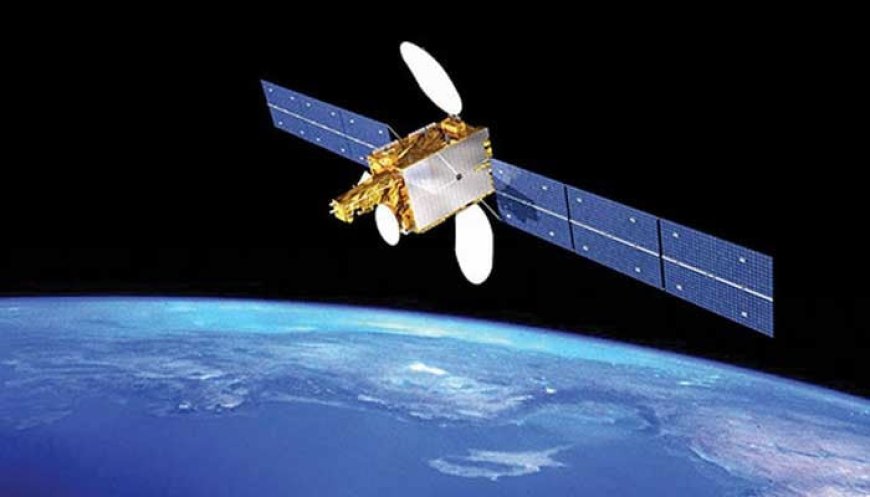Pakistan to Launch Remote Sensing Satellite
Pakistan’s national space agency, SUPARCO, is set to launch a cutting‑edge Remote Sensing Satellite (PRSS) from China’s Xichang Satellite Launch Centre on July 31, 2025. This mission marks a pivotal development in the country’s space agenda—joining predecessors like PRSS‑1 (2018) and the indigenous EO‑1 satellite launched in January 2025.

Pakistan’s national space agency, SUPARCO, is set to launch a cutting‑edge Remote Sensing Satellite (PRSS) from China’s Xichang Satellite Launch Centre on July 31, 2025. This mission marks a pivotal development in the country’s space agenda—joining predecessors like PRSS‑1 (2018) and the indigenous EO‑1 satellite launched in January 2025. Equipped with state-of-the-art imaging sensors, PRSS will support diverse national priorities: precision agriculture, urban planning, disaster management, glacier monitoring, and geospatial mapping of mega-projects such as CPEC. The satellite launch aligns with Pakistan’s Vision 2047, reinforcing its aspiration to become a deepening space‑capable nation.
-
Launch Date: July 31, 2025, from China’s Xichang Satellite Launch Centre
-
Satellite: Pakistan’s advanced Remote Sensing Satellite (PRSS), built in partnership with China, to enhance Earth observation capabilities
-
Applications: Precision agriculture, infrastructure planning, flood/landslide/quake warnings, glacier melt tracking, deforestation monitoring
-
Strategic Use: Geospatial mapping in support of the China‑Pakistan Economic Corridor (CPEC) development
-
Fleet Context: Joins a growing constellation—PRSS‑1 (2018) and fully indigenous EO‑1 (2025)
-
Vision Alignment: Supports SUPARCO Vision 2047 and the National Space Policy ambition of technological self-reliance
-
Monsoon floods, landslides, earthquakes, glacier melt, and deforestation are better monitored with satellite data.
-
PRSS imaging will enable rapid risk assessment, real-time mapping, and timely response capabilities.
-
Enables crop health monitoring, yield forecasting, and irrigation management.
-
Supports monitoring of urban sprawl, infrastructure expansion, transportation planning, and land-use policy decision-making.
-
Provides geospatial validation for key projects, such as highways, rail, energy corridors, and industrial zones.
-
Supports data‑driven governance across provinces involved in CPEC.
-
Advanced Imaging Payload: High-resolution optical systems capable of multi-spectral data capture.
-
Sun-Synchronous Low Earth Orbit (SSO): Ensures consistent lighting conditions, global revisit time, and data availability.
-
Data Access & Applications: Fast-track image delivery to stakeholders—including federal agencies, provincial authorities, academia, and private clients.
-
Ground Infrastructure: Integration with SUPARCO’s ground stations near Islamabad and Karachi for reception, archives, and national GIS systems.
-
On the launch of EO‑1, Reddit users highlighted pride in national engineering:
“Very good—we need baby steps: Pakistan finally allowed to deploy it.”
-
Many Pakistanis voice frustration over prioritization of space tech amid domestic economic concerns—but also acknowledge the long-term value in spurring STEM and research sectors.
The July 31 launch of Pakistan’s advanced Remote Sensing Satellite represents a transformative leap in the nation's utilization of space technology. Building on earlier projects like PRSS‑1 and the indigenous EO‑1, this mission empowers Pakistan with superior environmental, agricultural, urban, and disaster-monitoring tools. As it joins the ranks of space-observant nations, its success will rely on strong ground infrastructure, open access to data, and a continuous push toward scientific self-reliance. Aligned with SUPARCO’s Vision 2047, this project promises long-term gains—if managed transparently, sustainably, and inclusively.

 Ateeq Ur Rehman
Ateeq Ur Rehman